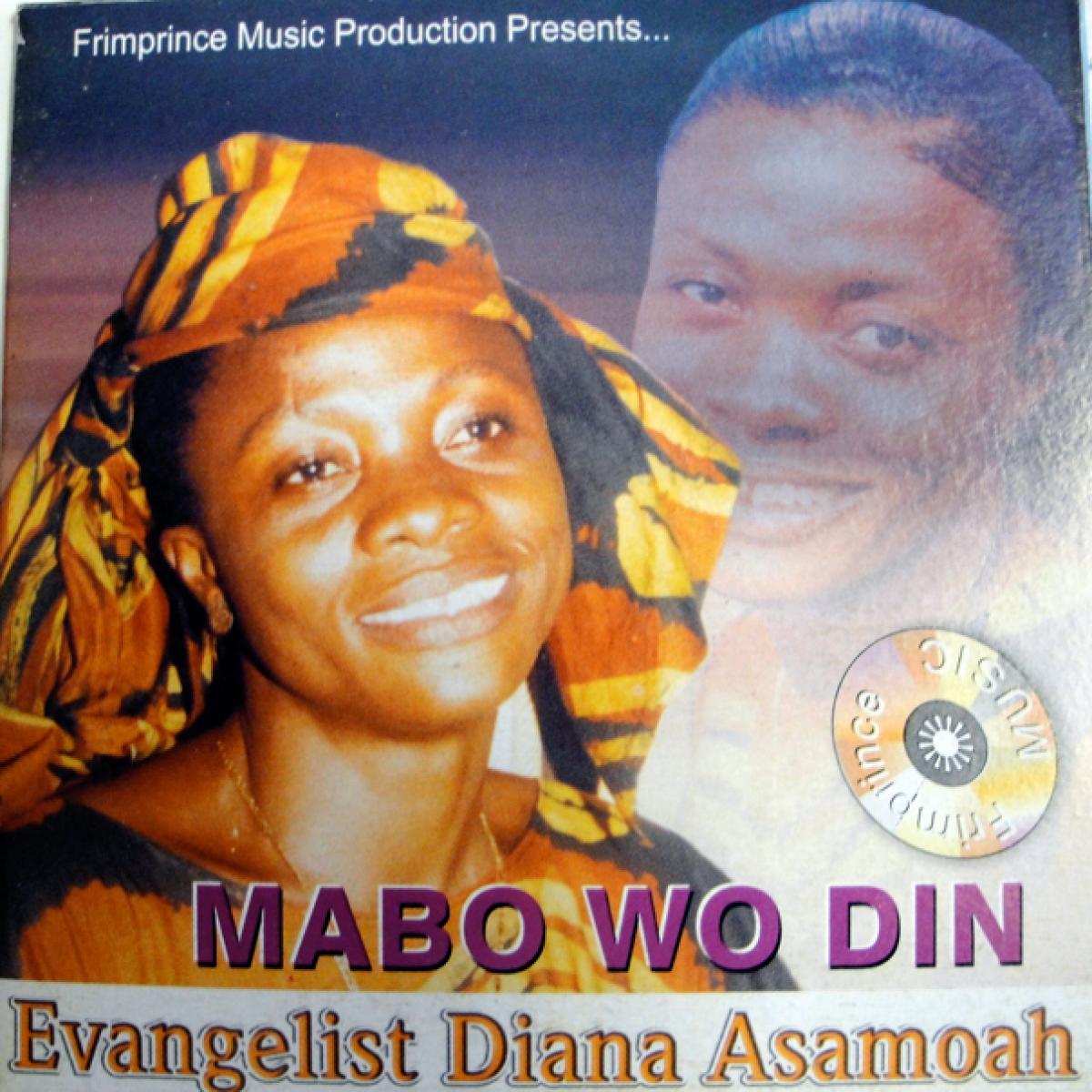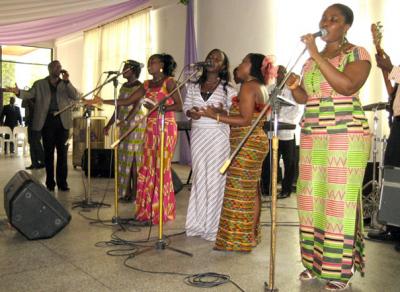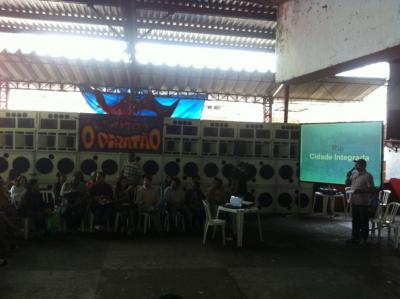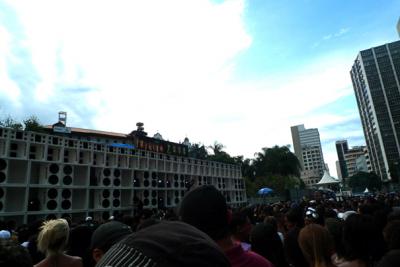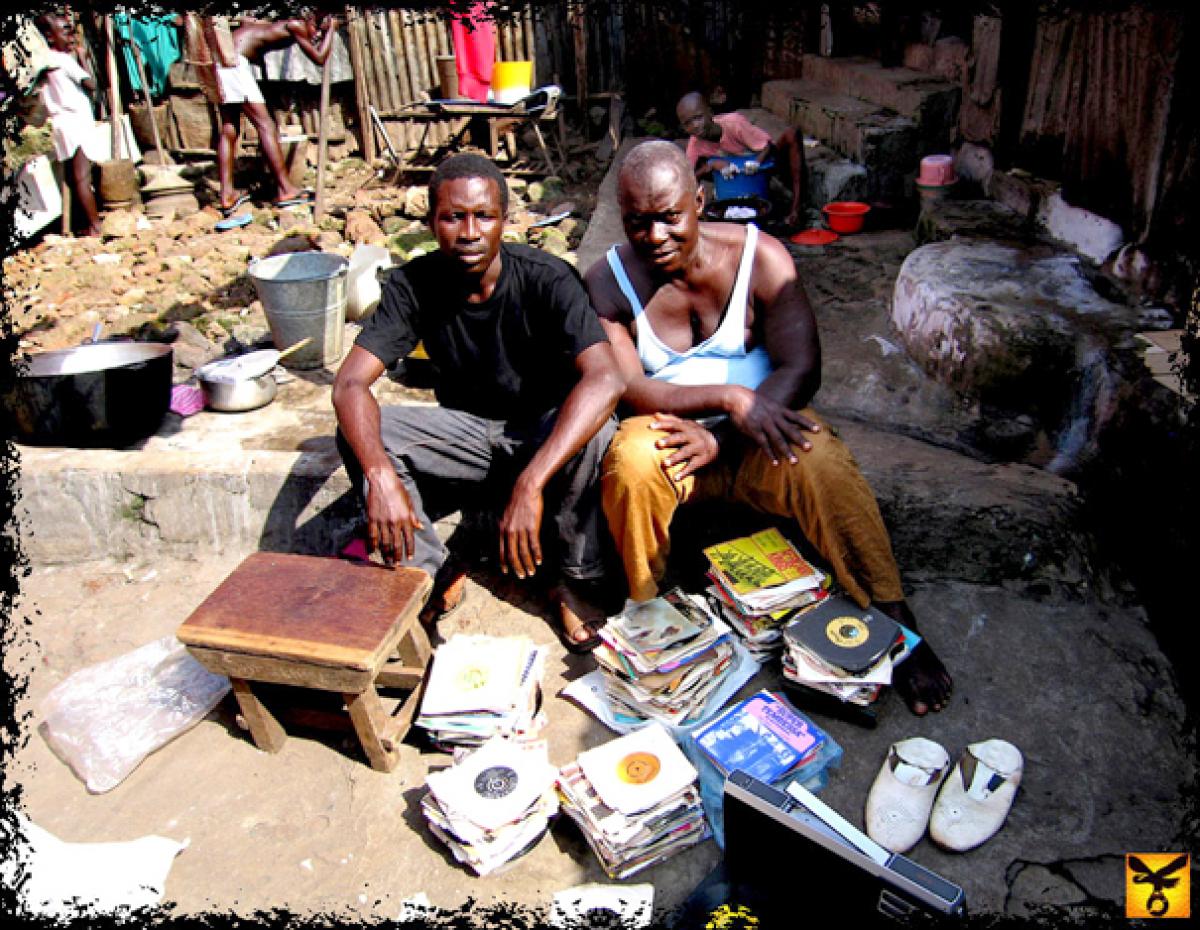
MP3 Blogging and the Urban Soundscape
Within the past decade, African-, Latin American-, and Caribbean-centered popular music weblogs have emerged as complex mediated spaces of cultural debate and transformation. Internet communities of bloggers and audiences, primarily based in the U.S. and the U.K., have generated extensive networks dedicated to the culling, distributing, and remixing of «tropical», «global bass», or «global ghettotech» recordings, usually presented amidst collections of «rare groove» recordings of popular music from the 1950s, 1960s, and 1970s. These tendencies in music blogging – on the one hand, the extensive archiving of twentieth century vinyl records found in local music shops or markets, and on the other, the playing-with and remixing of popular dance music – suggests relationships with the «Other» that ethnography must rigorously interrogate. From the Norient book Out of the Absurdity of Life (see and order here).
During the climax of the 2010 World Cup in South Africa, Ghetto Bassquake, an Internet music collective and MP3 blog, posted a newly recorded South African house song by DJ Sbu. The song, called «Vuvuzela Bafana», represented a mixture of transnational urban dance music styles, including hip hop, dubstep, grime, and kwaito, and quickly became the early summer anthem of the global electronic music scene (Fruko 2010). Ghetto Bassquake sought to inspire an Internet conversation about «Vuvuzela Bafana», and more generally, about contemporary South African popular music and aesthetics, while providing the blog’s mostly European and North American listenership with an accessible frame of reference: the vuvuzela – a one-note wind instrument that was as contested as it was emblematic of the 2010 World Cup. For many North American and European listeners, the vuvuzela either represented an authentic element of South Africa’s music tradition, or was merely a nuisance amidst the noise of the World Cup. Drawing attention to the complexity of the debate, and to deepen readers’ understanding of South African music history, Ghetto Bassquake played «Vuvuzela Bafana» alongside a 1970s «rare groove» recording of «Nkuli’s Shuffle» by the Mahotella Queens. In the same blog post, Ghetto Bassquake urged listeners interested in «rare grooves» such as 1970s funk and mbaqanga to purchase a copy of Next Stop Soweto: Township Sounds From the Golden Age of Mbaqanga from Strut Records – a compilation that was «the result of several years of painstaking research and vinyl archaeology in South Africa» (Strut Records 2010).
Ghetto Bassquake’s juxtaposition of contemporary South African house music with 1970s mbaqanga represents the convergence of two movements in digital music production: that of remixing contemporary popular music styles, and of rediscovering vintage music recordings. Typically segregated into distinct popular culture milieux, the «record digger’s» vintage music and the DJ’s dance music have been spliced – and with that splicing, a certain declaration has been made. As I will demonstrate below, this declaration revolves around the affirmation that «virtual» space – and with it, the «virtual» soundscape – is far less «virtual» than it is material. The frequencies, rhythms, sensations, and tensions of the digital soundscape are bound up in the materiality of the urban environment. According to this logic, it is not unreasonable to consider the digital soundscape as an extension of urban space. As such, it necessarily embodies the contradictions, inequalities, excesses, and potentials through which urban space is lived.
The articulation of South African electro-house and mbaqanga as contingent upon one another – as connective elements in the digital music sensorium – thus hints at emergent political-ethical and aesthetic dynamics in the urban soundscape. Several questions emerge in relation to this: for instance, how do blogs centered on contemporary «world» popular music and those focusing on the excavation and archiving of twentieth century vinyl records function to define and perform one another? In which instances are they articulated as part of a coherent, contiguous «global» music aesthetic? And in which instances are they kept at an arm’s length from one another? Are there implicit limits to each blog form’s aesthetic – and therefore political – terrain? What sensory dimensions are intensified in certain blog spaces, and dampened in others? What might this suggest about the particular sensory regime of digital social spaces? How does this shape the perceptual field in which popular music is encountered?
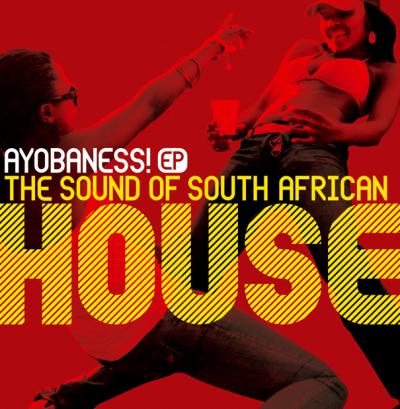
In posing these questions, I intend to sketch out some areas of critical thought that must be applied to contemporary mediated music and to sonic experience. In what follows, I will attempt to make clear the various currents of experience and ideology that define music blogging as an aesthetic practice. I will show that music blogging, rooted in urban relationships and reflective of particular infrastructural arrangements and sensibilities, rethinks urban space and aesthetic experience, thereby generating new tensions, desires, and potentials through which everyday experience is lived. The musicians and bloggers with whom I worked, for instance, continuously reflected on the politics and ethics of their work, as well as on their responsibility to audiences and to other musicians. Many of them conceptualized of the blog in terms of feelings of frustration – toward their alienation from readers and other bloggers, toward record labels that demanded they remove «illegal» songs, and toward the material limitations of blogging and the necessity of supplementing one’s income with a full-time job. It is this articulation of capitalist inequality within the sonic-spatial structure of the Internet – and thus, the city – that I hope to make clear. The contradictions of capitalism in everyday life are performed – and in many instances, intensified – in digital social spaces. Yet in underscoring these disjunctures, this paper seeks to illuminate the ways in which ethnography – as both a style of writing and a method of inquiry – is both caught up in and, paradoxically, alienated from this everyday experience. Mediated music requires us to rethink and explore the limits of both the sensed and the intelligible, and of ethnographic research itself. This form of ethnography plays with these limits, collapsing the distinction between what is heard and what is written, and pointing toward their mutually transformative potentials.
Situating Media Anthropology
Anthropology’s most important critique of media has centered on the connection of media practices to particular forms of state power. This approach has highlighted the uneven development inherent in capitalist political economic systems, often made explicit in media practices, even as it is toyed with and challenged in a variety of fashions (Ginsburg et al. 2002; Larkin 2008). The de-emphasis of the nation-state as the locus of political and economic power, and the growing significance of transnational political-economic relationships, became increasingly common perspectives concerning the advent of digital technology. Indeed, since the early twentieth century, mass media have significantly restructured the field of cultural and ideological debates surrounding musical production. Recent ethnographic inquiries have attempted to fuse broader themes of nationalism, modernity, and the transnational imaginary into studies of music production and reception (Frishkopf 2008; Hirschkind 2006; Stokes 2010). In particular, these ethnographies underscore the contested relationship between «official» nationalist discourses and «unofficial» popular nationalism, revealing the often fragmented experience of modernity, and articulating Lila Abu-Lughod’s call for a renewed focus on the nation as a critical force in the production of modern, national subjects and in the ordering of everyday experiences (Abu-Lughod 2004; Hirschkind 2006; Stokes 2010).
As media technologies reflect new configurations of power and status, they are not neutral, apolitical conduits of information. Instead, they simultaneously contribute to and are defined by relationships of power and forms of control. Contemporary media scholarship suggests that «new media» carry the potential for significant audience input and interaction, and allow consumers greater control over the form of that interaction, while noting that they may also be used as agents of oppression and control (Ginsburg et al. 2002; Lysloff and Gay 2003; Manuel 1993). These studies reveal the tensions at work in media and social theory. On the one hand, audiences can no longer be considered uncritical, powerless consumers of the products of large-scale media industries; the intersecting roles of «producer» and «consumer» signify greater technological agency and emerging grassroots political action. On the other hand, we are reminded that media are not autonomous from networks of power, and that media anthropology must «avoid an invocation of social agency without a sense of the limits on that agency». (Larkin 2008, 10).
Ethnographic research on media practices often emphasizes that the researcher be simultaneously tuned in to the circulation of cultural products and ideas in media, as well as in the «life-worlds» of bloggers and their audiences (Abu-Lughod 2004; Ginsburg et al. 2002, 1-36; Wilson and Peterson 2002). Discussions, debates, and analyses of digital products on the Internet (for example, particular songs and videos available for download or streaming) must thus be studied with an ear to the complex and interconnecting spheres of activity and influence that make up these life-worlds. Further, the circulation of ideas and cultural products on the Internet and the life-worlds of interlocutors should be engaged with in a multidimensional fashion, looking simultaneously at producers and consumers, critics and audiences, musicians and listeners. Since the advent of digital media technology, anthropologists and ethnomusicologists have noted the pervasiveness of this form to human experience, suggesting ways in which (often ephemeral) cultural products and social relationships may be analyzed ethnographically (Lysloff 2003; Lysloff and Gay 2003; Murthy 2008; Wilson and Peterson 2002). This typically entailed the fitting-in of media phenomena to interpretive anthropological techniques and theories, with much struggle, doubt, and defensiveness surrounding the method of digital ethnographic inquiry. Is it truly ethnography if I am on my computer? Can I do ethnography remotely? How can I study a «community» if its members are geographically dispersed, and their social interaction takes place online? While they have aided in sketching out new possibilities for ethnographies, these questions do not radically stretch the intellectual and imaginative capabilities of the ethnographic genre, so that it might understand new and complex ways of living. Digital ethnography consists in relating the text/image/sound of the medium – that is, the ethnographer’s own aesthetic and sensory experience – to what is learned through interaction, conversation, and reflection with the producers of these aesthetic practices. It is the inscription of social discourse (Geertz 1973) occurring on multiple interpretive levels – the personal and verbal, and the public and textual – allowing the ethnographer to grasp meaning in multiple and complex ways.
Digital ethnography prompts us to rethink the anthropologist’s mode of being and interacting in society, particularly as her experience with the media and people she works with can be both intimate and intrusive. In this way, it revives and thinks through perennial problems in anthropology concerning the positionality of the ethnographer. My own ethnographic engagement with music blogging is the result of a series of intersecting social positions vis-à-vis music bloggers that have shaped my perspective. On the one hand, my attraction to the aesthetics of these blogs entailed connecting with them as an audience member; I read, listened, downloaded, and streamed with great interest and appreciation. This in turn directed my focus on these blogs and their authors as «subjects» of ethnographic study. As a founding member of a research collective and blog centering on expressive culture and critical social theory, I also approached MP3 music blogs as a fellow blogger, and a participant in the Internet blog space. While it is contingent on digital sociality, my research was complemented by formal and informal conversations and «participant observation» with MP3 bloggers in the lived, material spaces within which they experience and give meaning to media and infrastructures. My interactions with music bloggers were thus informed by a particular set of relations and interests. I was concerned with MP3 bloggers who work and live in urban spaces, and particularly with those in New York City – a locus of growing importance for both the «global ghettotech» and «record digging» movements. After examining MP3 music blogs more deeply, I realized that almost all of my participants were white, middle class, heterosexual males; my relationships with bloggers were thus mediated and complicated by particular intersections of race, gender, class, and sexual inequality. This ethnographic dynamic is intimately connected to the materiality and representation of urban space in music blogging. Digital ethnographic forms of inquiry thus facilitate an understanding of the aesthetic ideologies that are consciously or unconsciously animated and privileged in the cultural work of MP3 blogs.
Power and Oppression in the «Global Ghetto»
On MP3 blogs, these tensions are animated and performed by authors and their audiences, offering a rich space for anthropological analysis. Typically concerned with tracing musical and cultural connections within the so-called «global ghetto», these blogs experiment with sonic, visual, and textual materials in order to contextualize their discussions of history, the nation, space, and aesthetics. The debate surrounding «global ghettotech» – or «global bass», «tropical», «new world music», and «world music 2.0», as it is variously called – is an example of the struggles and contradictions surrounding aesthetic ideologies within contemporary digital culture. Coined by ethnomusicologist Wayne Marshall, the term «global ghettotech» refers (in part, ironically) to contemporary popular street music from «global» cities – to «a certain sphere of circulation» and «a certain […] celebration of the ghetto therein.» The irony of this «celebration» is, he notes, «a product of the glaring (material) contradictions between those who are celebrating and those who are celebrated» (Marshall 2007). The archive-oriented «record digging» movement has engendered similar, and indeed, complementary problems and debates, particularly regarding the historiography and ethnography of the music being blogged about.
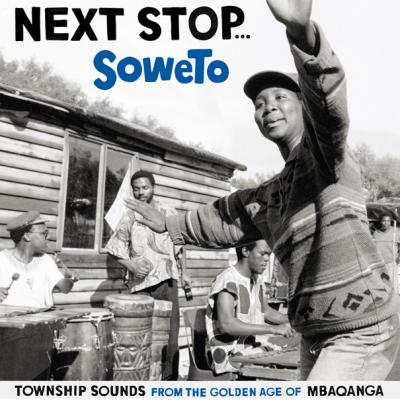
«Record digging», (or «crate digging»), arose in the 1980s and 1990s as part of the sampling-oriented aesthetics and culture of hip hop. As the variety of unique melodic and rhythmic samples from which DJs could choose continued to shrink, hip hop musicians began looking to Africa to supply the West with a fresh array of sounds (Tucker 2010). The advent of the blog as a space of participatory authorship has, as DJ Chief Boima has noted, undoubtedly preserved recordings that have been in danger of disappearing, and widened the scope of listeners to these recordings. Nonetheless, it implicates DJs and MP3 bloggers in a neo-colonial system of raiding African music history and material culture (Tucker 2010). In a blog post that inspired a lively debate on this theme, he writes:
[I]t does seem that the current mad-dash for rare African vinyl could be analogous to Europe’s 19th Century Scramble for Africa, a mad-dash for rare African minerals. There is a trend among rare-groove DJs to «find fortune» in the (re)discovery of musical gems in places where the value of vinyl and recorded music from the past has diminished […] My biggest criticism is not that they are going to Africa to shed light on these «lost» recordings and forgotten about artists. I’m instead worried that they concentrate too much on those forms of music that fit nicely into the story that they, the DJs, want to tell about the music. The cataloging tendency tends to be a colonial one. Also, many of the DJs and label owners, perhaps because of its shared lineage with Hip Hop, have concentrated on Afro-Beat, or have given more weight to genres that are popular in the west like Rock and Funk (Tucker 2010).
As Boima points out, this Internet community of DJs and collectors is centered in Western Europe and North America; the rare and obscure 78 rpm, 45 rpm, and LP records that they digitize and disseminate to mass audiences – both for free and for profit – are overwhelmingly African, Latin American, and Asian. This online community has been instrumental in defining the discourse of «world music» consumption. As René Lysloff and Leslie Gay point out, this particular «technoculture» may be thought of as «emerg[ing] in response to changing media and information technologies, forms characterized by technological adaptation, avoidance, subversion, or resistance» (Lysloff and Gay 2003, 2). An examination of the «cultural logic of recorded sound», wherein «magnetic tape and its use began to dislodge (musical) sound from its source», thus allows us to understand the overarching political tendencies within a technocultural movement (Lysloff and Gay 2003, 15). This particular cultural formation is reflected in the forms of knowledge embedded in digital music cultures, and informs the types of «technoculture» that MP3 bloggers enact and reproduce. In other words, the impulse to record live sound – and further, to select recordings for the creation of a mixture of sounds – reflects an enlightenment-derived, capitalist sensibility – one that reproduces the logic of music dislodged or disembodied from its source. It is important to keep in mind the history of music «dislodged» from its performative source, and of the concomitant cultural formations that this reflects. As objects with social resonance, Lysloff and Gay write, technologies can be thought of «as part of intentional linguistic processes that include debate, even defiance, and the possibility of altering technological (and political) authority» (Lysloff and Gay 2003, 18). MP3 bloggers initiate and participate in a discourse on the social meaning of technology, encouraging listeners to «reach informed decisions about the aesthetic, social, and political consequences of technological change» (Lysloff and Gay 2003, 18), while simultaneously re-enacting colonial relationships and networks of hegemony.
This particular discourse is animated in evocative – albeit often formulaic – terms in the blog space. Have Plenty Music, an MP3 blog supplying «fresh sonic produce from Africa», describes itself as an «online tribe with our ears to the ground and eyes to the African sky on a quest to deliver sounds […] to let you enjoy this fresh produce from the sonic farms of the hypnotic mother continent» (Have Plenty Music 2009). Similarly, Radiodiffusion Internasionaal, an independent record company, radio show, and MP3 blog specializing in LPs of funk, rock, and syncretic local genres from the 1960s and 1970s, operates by the mantra that «the music is out there, somewhere, waiting to be discovered» (Radiodiffusion Internasionaal 2010). In a post from 2010, the website’s founder comments on the state of the «record digging» movement:
Just the other night, I was talking with a fellow record collector – err, I mean archivist – and he was lamenting about how record hunting – I mean researching, researching – has become more competitive and that the prices for these records – Sorry, research materials – has gotten out of control. There are more and more people searching for these unheard sounds. Due to the onslaught of re-issues and compilations, as well as websites like this one [Radiodiffusion Internasionaal], folks have been turned on to something they never knew even existed before (Radiodiffusion Internasionaal 2010).
The archive-oriented MP3 blog’s discourse of exploration, salvage, and conquest is revealing of the ideologies and power dynamics embedded in particular media practices. As Paul Théberge writes in Music and Technoculture, (Théberge 2003) «in delivering these sounds found only at ‹the edge of the world›», DJs and record collectors re-enact – and perhaps breathe new life into – the colonial encounter and its narratives of exploration and conquest (Théberge 2003, 100). Théberge analyzes the discourse of cultural exchange within the broader issue of cultural appropriation in world music sampling, noting that «[s]ample recordists are portrayed variously as travelers, explorers, or pop ethnomusicologists, expending time (as long as two years in one account) and great effort to bring back sonic treasures to the West» (Théberge 2003, 100). In what he terms the «Global Village discourse», the justification of the appropriation of musical styles takes the form of an assumed equal exchange in expressive cultural forms: «by portraying the recorded subject as active and the sound recordist as passive, it inverts the relationship of power that exists within the process of cultural exchange. This ‹ideological reflex› absolves sampling musicians from responsibility through an apparent liberation of the sampled subject, in discourse, at the same time that their sounds are technologically reduced to mere raw material, grist for the sampling mill» (Théberge 2003, 104). According to Théberge’s perspective, engaging in this «inversion» through «record digging» is thus perhaps one of the clearest affirmations of power, in that it serves to disarm the «recorded subject» both aesthetically and politically.
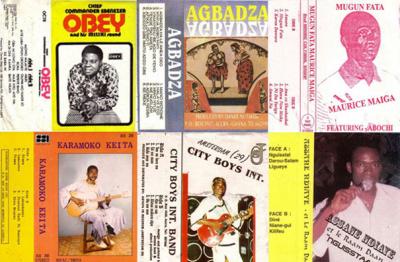
Yet several of the blog authors with whom I spoke articulated distinct motivations for seeking out and sharing rare and unheard sounds. Many bloggers engage with questions of responsibility and ethics in the blog space, and often express a commitment to moving beyond Orientalist fascinations with the «exotic». In this way, the blogging environment might be considered a fresh space of cultural critique, stimulating the emergence of renewed political-aesthetic dialectics. It is tempting to view these dynamics as an element of «new media» sociality, enabled by the emancipatory potentials of «virtual» interaction. Yet these dynamics are realized and lived out most saliently in urban environments through particular infrastructural arrangements of media and technology. Many bloggers conceived of their blogs as a documentation or archival project alternative to mainstream media or inaccessible scholarly archives. Brian Shimkovitz, of Awesome Tapes from Africa, noted that his work initially aimed to be «anti-ethnomusicological» (Shimkovitz 2011). Indeed, he continues to work with the hope of providing his listeners with accessible knowledge, as well as a more immediate musical encounter. Nick Barbery, author of ghostcapital, saw his blogging interests as tied to deeper fascinations with «folk art», «untrained art», with «alternate histories» and «ways of looking at the world». Nick pointed out that a theme of «sustained fascination and interest» in his work was the concept of the «other» and the «fetishism of the exotic». He reflected on how one might «explore otherness responsibly and respectfully», noting his «in-process intellectual agenda with this topic, as it relates to intercultural exchange, notions of/potential toward exploitation, intended audience, and so on». Our conversations made Nick curious about my own intellectual commitments and intentions as an ethnographer, and how this structured my interactions with him as a «subject». He considered my perspective as an ethnographer to be complementary to his own work, and speculated that problems of exoticization were a common struggle in both of our work. Yet Nick saw my ethnographic work as distinct enough from his own for a dialectic to emerge wherein he might reflect on the aesthetic ideologies embedded in the music blogging environment (Barbery 2011). As I will clarify below, Nick’s ideas suggest a critical investigation of the material inequality embedded in blogging as a music-making practice.
The Materiality of Sound Infrastructures
In focusing on the organization of the objects and artifacts of technology into particular regimes of the senses, a critical materialist look at media and infrastructure allows us to understand music blogging as part of a political and aesthetic ideological system. The MP3, for example, constitutes a key artifact of this techno-musical experience, and a medium through which blog authors and their audiences imagine and articulate links between disparate social spaces. The blog space itself is constructed and curated according to the political economy of particular cities wherein bloggers live. Race, sexuality, gender, ability, and class are inscribed into the blog space. Access to particular recordings, and to particular neighborhoods in which one might find these recordings, is indeed shaped by the positionality of the blogger. Yet the structuring of urban space and experience according to these positionalities further shapes the range of aesthetic choices made on music blogs. For Gary Sullivan, a poet, cartoonist, and author of bodega pop – a blog centered on popular music CDs found in New York City bodegas – many CDs in his collection originate from small neighborhood shops that have since closed due to unmanageably high rents, a symptom of the consolidation of capital and property into increasingly gentrified zones of the city. While instances and symbols of power and inequality can be read into the blog space, Gary noted that his blog was not representative of urban space. Rather, his aesthetic commitment is to the portrayal of other people’s sounds and images – a «de-familiarization» from the popular music of mainstream and «world music» markets. In his words, the point is «not to orient you but to disorient you» (Sullivan 2011). These intersections between aesthetics and political economies in urban spaces imply new interactions between the researcher and the researched in ethnographic work.
The discourses engendered by Radiodiffusion Internasionaal, bodega pop, Awesome Tapes From Africa, and other MP3 blogs dedicated to the collection of music artifacts suggest that the material culture of record collection, as well as the aesthetics of vinyl records, record sleeves, or other vintage ephemera, intersect to define twentieth century records as circulating technologies with political properties. Performed alongside «global ghettotech» recordings, these blog forms are constitutive not only of a particular material infrastructure, but of particular political forces and frequencies within this infrastructure. This perspective forms the basis of Brian Larkin’s study of media and urban culture in Northern Nigeria, wherein he seeks to unmask the processes by which technologies both create modern citizens and are created as objects with social meaning (for example, the cinema as a space of urban colonial social interaction, or the radio as an object entailing new domestic social relations). As Larkin emphasizes throughout his work, much of his theoretical concern is with the experience of media in the urban environment. In focusing on the infrastructural networks in which media technologies are constituted, he draws attention to the interlocking networks of power that shape the urban environment and its population.
Like Walter Benjamin, Larkin’s interest is in the «aura» – the «electrical charge of excitement» (Larkin 2008, 2) surrounding the assemblage of cinema, radio, and other media technology. Yet while Benjamin celebrated the revolutionary potential that arises from the aura’s depletion, Larkin challenges his assumption that the aura dissipates as a result of new layers of mediation and technological reproduction, arguing instead that the spectacle of technology within urban spaces converges with the political regulations of the state to produce a set of tactile, affective responses in audiences. Its assemblage into a social event reflects the spatial and material regulations that act upon the built environment, and upon individuals, positioning the physical networks of urban media systems (for example, the cinema, mobile cinema units, and public radio listening stations) as discursive nodes in wider «networked infrastructures» (Larkin 2008, 5).
Larkin’s conception of media and urban infrastructure is a response to the theories of technology and power outlined by Debra Spitulnik (Spitulnik 1998-9) in her study of radio, electronic media, and modernity in Zambia, and in Langdon Winner’s exploration of the politics of technology and technological objects. This focus on the objects and artifacts of technology is crucial to the study of media and infrastructure put forth by Larkin, and provides an important supplement to the study of the Internet, experimental music, DJs, and their multi-layered social networks. It is through these writings on media and materialism that we can begin to understand music blogging as part of the digital politics of music consumption. The two tendrils of this system work in complementary ways: on the one hand, «global ghettotech» mixtape-centered blogs give special status to the MP3 and to digital music technology; on the other, archive-centered blogs give special status to the cassette tape, the LP, 78 rpm, and the 45 rpm disc from the twentieth century. Jonathan Sterne has a number of valuable insights on the materiality of MP3 music and its implications for the corporeality of techno-political spaces in «The MP3 as Cultural Artifact» (Sterne 2006). According to Sterne, the MP3 «plays its listener» by imitating the «embodied and unconscious dimensions of human perception in the noisy, mixed-media environments of everyday life» (Sterne 2006, 835). This observation opens us up to further thoughts: If the MP3 mimics human perception, does it have agency or autonomy in the way that Larkin might envision it? Does the MP3 engage and critique power relations through acts of «familiarization», in Bakhtin’s sense? Significantly, several of my interlocutors emphasized MP3 music blogging as a process of de-familiarization, of disorienting listeners. Perhaps this disorientation can be linked to a certain «spatialization of time» (Harvey 1991) as realized in the images and gestures of the blog, whereby the temporality of everyday life is transposed onto the blog space. In this way, temporal sensation is mapped out and projected into the spatial structure of the blog, and of the cities wherein bloggers live. This process of arranging sensation – that is, through the blogger’s or DJ’s contrivance of images and sounds – within the blog space thus points us toward the formulation of an aesthetics that is peculiar to the MP3 blog. This peculiarity, however, is reflective of the material arrangement and infrastructure of the city. We might read into this infrastructure the city’s inherent contradictions: It is on the one hand, a site of industry, activity, excitement, and perhaps liberation, while at the same time a site of stultification, exploitation, and oppression. The aesthetics of the MP3 blog arise out of the challenge of translating the material contradictions of urban space into a «separate realm of cognition», into «moral and political principles appropriate for action» (Harvey 1991, 19).
If we consider David Harvey’s notion of space in «Space as a Key Word» (Harvey 2006) – of a three-by-three matrix of absolute, relative, and relational space (or space-time) placed against the LeFebvrian notion of material space, representations of space, and spaces of representation – we may begin to understand the materiality of music blogging in terms of the pleasures, tensions, and potentials they produce. The intersection between relational space and the representation of space (or conceptualized space), for instance, seems particularly relevant for examining the dialectics of mediated music. Yet we also see the articulation of music-making and blogging practices at the juncture of material space (or experienced space) and that of absolute, relative, and relational space. This is evident in particular infrastructural arrangements, flows of information, social relations, value, sensations, and activist potentials. We must also consider the collision between spaces of representation (lived space) and absolute, relative, and relational space that stimulates fantasies, desires, excitement, tension, and senses of history and identity. Harvey’s important theoretical conception reveals to us a mode of translating aesthetic and spatial experiences into one another. It is, as Jacques Rancière suggests, «a reconfiguration in the here and now of the distribution of space and time, work and leisure» (Rancière 2009, 19). In writing up these thoughts, my aim has been to illuminate some of the mediated articulations of urban space, sensation, and techno-politics. And in doing so, it has been my hope to point toward what Rancière calls «emancipation», and how we might think emancipation not only in relation to the audience/artist relationship, but also with particular regard to the ethnographic relationship.
The challenge of our work thus becomes «the blurring of the boundary between those who act and those who look; between individuals and members of a collective body» (Rancière 2009, 19). It necessarily is undertaken at multiple levels in our engagement with mediated music – as producer and audience, «subject» and ethnographer. This work thus thinks through the problems and points of solidarity in the relationship between them. I see this happening most saliently on the MP3 blog, where bloggers and DJs pose political-aesthetic problems for the division of blogger and blogged. The playful articulation of «Vuvuzela Bafana» alongside 1970s mbaqanga, is, for Ghetto Bassquake, a mode of presenting this problem, insofar as it calls attention to the power relationships embedded in particular forms of blogging and music-making. In positioning «Vuvuzela Bafana» and Next Stop Soweto as points of historical orientation in the blog space, Ghetto Bassquake asserts their rootedness within the temporal and spatial structure of the lived environment, and within the urban soundscape therein. This assertion inevitably points toward new engagements between the ethnographer and her «subject», toward ways in which we can rethink the inscription of social practice, and thus rethink the politics and aesthetics of the urban experience and its inscription in mediated music.
List of References
This text has been published first in the Norient book «Out of the Absurdity of Life».
Biography
Published on May 23, 2012
Last updated on June 27, 2023
Topics
Digitization means empowerment: for niche musicians, queer artists and native aliens that connect online to create safe spaces.
About Indian musicians in German pedestrian zones and the relationshis of music and place in academic research.
How artists deal with the practice that some call «time-travel» and others «audiotopia».
How do acoustic environments affect human life? In which way can a city entail sounds of repression?
